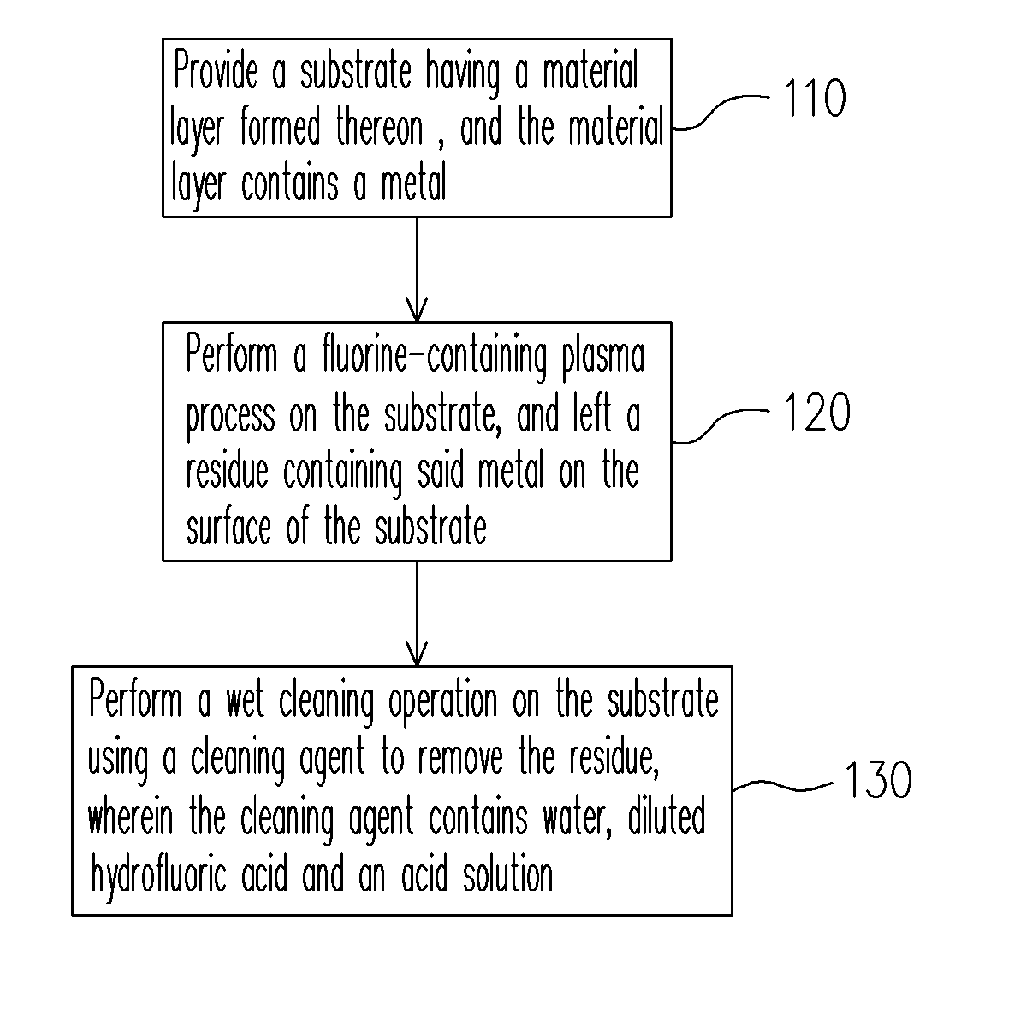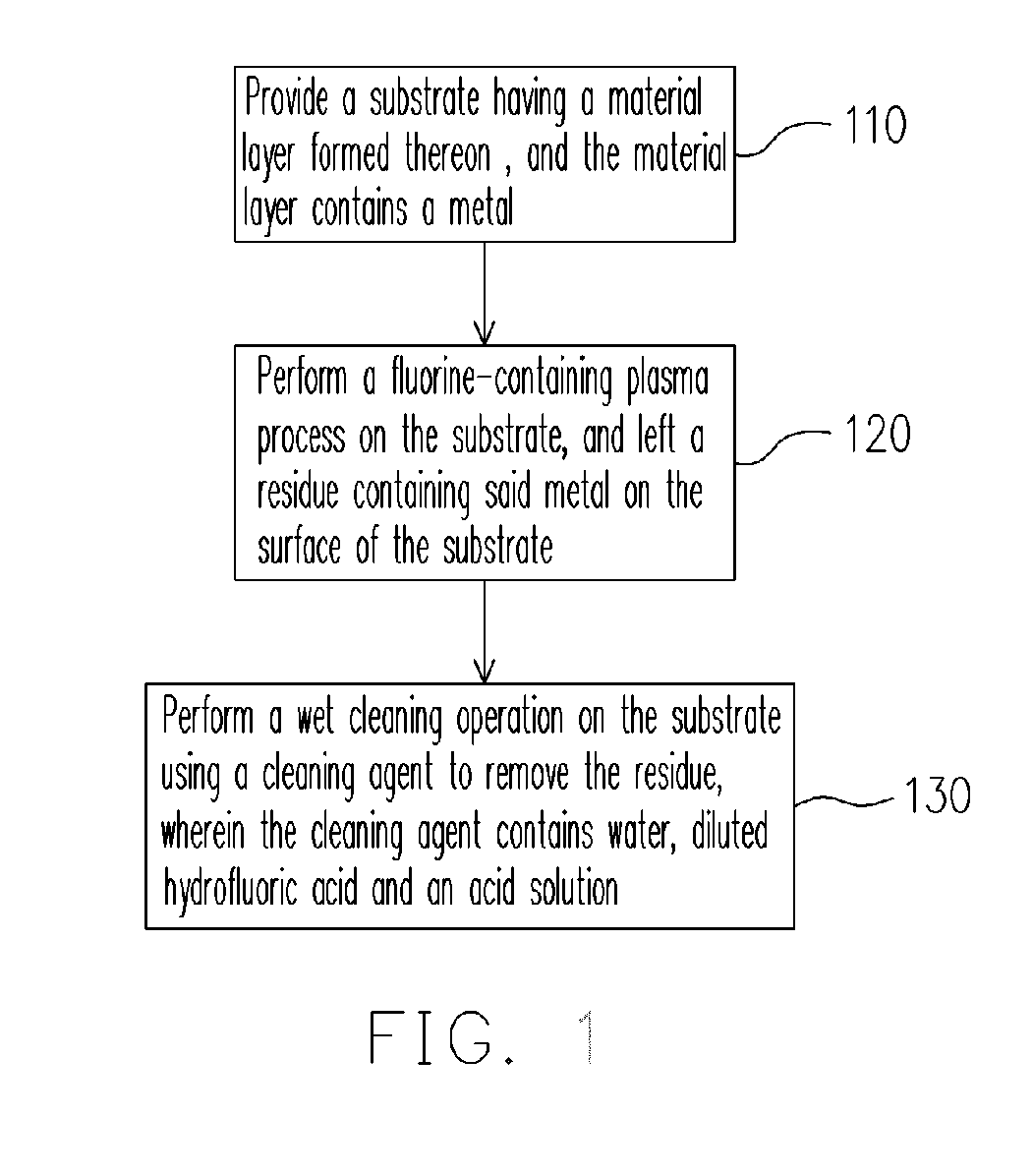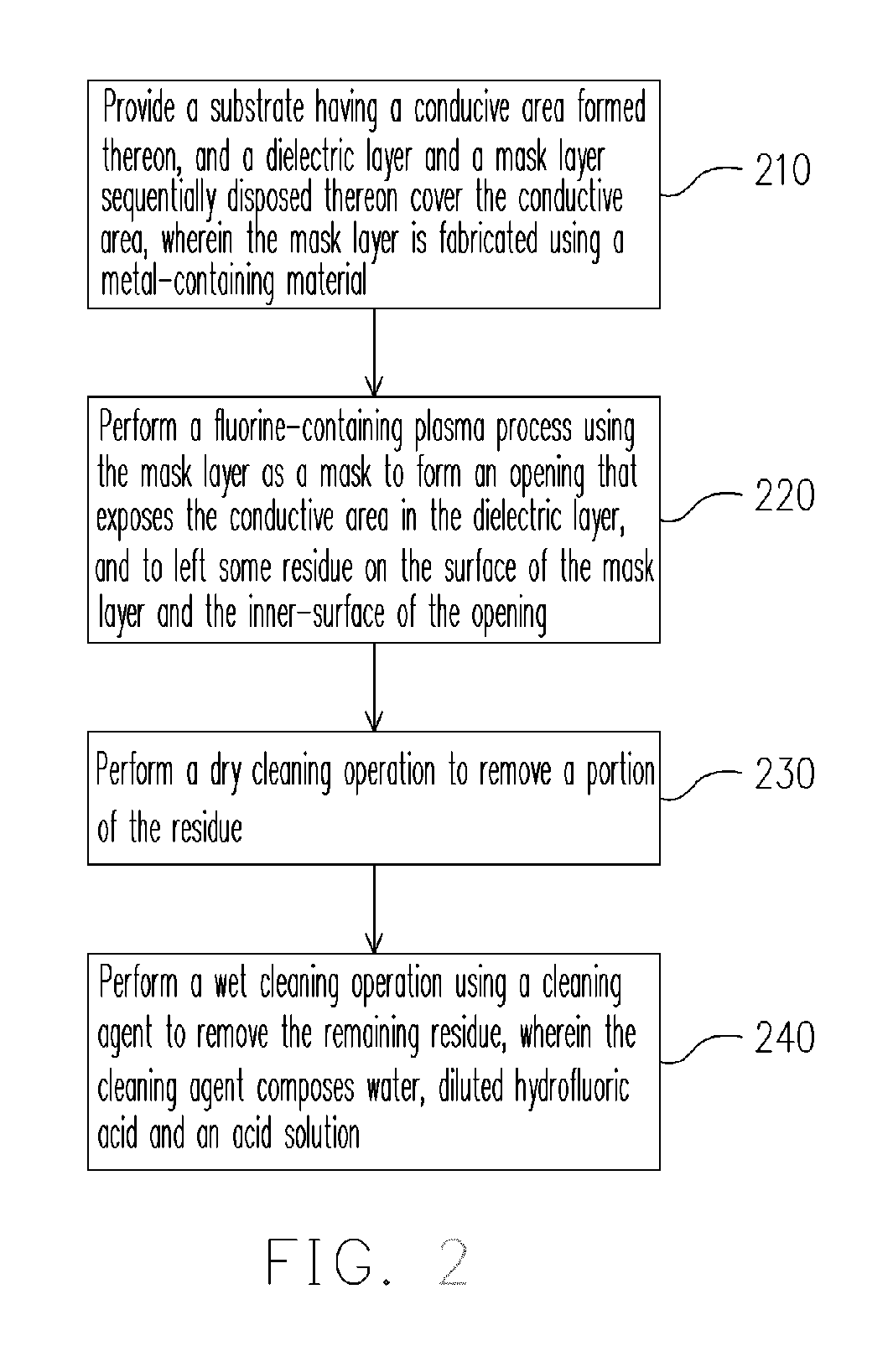Cleaning agent and method of removing residue left after plasma process
a plasma process and cleaning agent technology, applied in the preparation of detergent mixtures, inorganic non-surface active detergent compositions, detergent compositions, etc., can solve the problems of abnormal conductivity, affecting the subsequent etching process, abnormal profile changes of devices, etc., and achieve the effect of increasing the yield
- Summary
- Abstract
- Description
- Claims
- Application Information
AI Technical Summary
Benefits of technology
Problems solved by technology
Method used
Image
Examples
Embodiment Construction
[0031] Reference will now be made in detail to the present preferred embodiments of the invention, examples of which are illustrated in the accompanying drawings. Wherever possible, the same reference numbers are used in the drawings and the description to refer to the same or like parts.
[0032] The present invention provides a cleaning agent for removing residues that contain titanium fluoride. The cleaning agent is a mixture comprising water, diluted hydrofluoric acid and an acid solution. The wafer can be de-ionized water or ultra-pure water. The diluted hydrofluoric acid has a concentration greater than or equal to 30 ppm such as 150 ppm. The acid solution is an inorganic acid compound or an organic acid compound, for example. The inorganic acid compound includes sulfuric acid, phosphoric acid, nitric acid and hydrochloric acid, for example. The acid solution has a percentage by weight concentration of greater than or equal to 1%, for example. The cleaning agent is capable of re...
PUM
| Property | Measurement | Unit |
|---|---|---|
| dielectric constant | aaaaa | aaaaa |
| weight | aaaaa | aaaaa |
| concentration | aaaaa | aaaaa |
Abstract
Description
Claims
Application Information
 Login to View More
Login to View More - R&D
- Intellectual Property
- Life Sciences
- Materials
- Tech Scout
- Unparalleled Data Quality
- Higher Quality Content
- 60% Fewer Hallucinations
Browse by: Latest US Patents, China's latest patents, Technical Efficacy Thesaurus, Application Domain, Technology Topic, Popular Technical Reports.
© 2025 PatSnap. All rights reserved.Legal|Privacy policy|Modern Slavery Act Transparency Statement|Sitemap|About US| Contact US: help@patsnap.com



